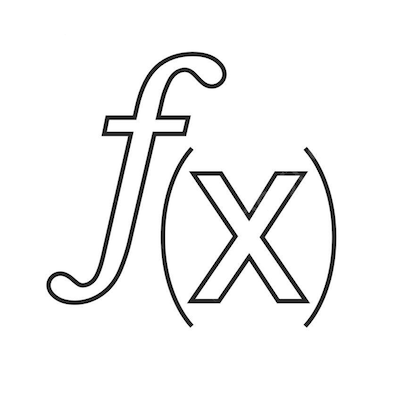🔬 Tutorial problems gamma#
Note
This problems are designed to help you practice the concepts covered in the lectures. Not all problems may be covered in the tutorial, those left are for additional practice.
\(\gamma\).1#
Solve the following polynomial equations using the method of completing the square, and factor the left-hand side of the equation where possible.
\(\quad x^2 - 5x + 6 = 0\)
\(\quad y^2 - y - 12 = 0\)
\(\quad 2x^2 + 60x +800 = 0\)
\(\quad -\tfrac{1}{4}x^2 + \tfrac{1}{2}x + \tfrac{1}{2} = 0\)
\(\quad m(m-5) - 3 = 0\)
\(\quad 0.1 p^2 +p -2.4 = 0\)
[Sydsæter, Hammond, Strøm, and Carvajal, 2016] Exercises for Section 3.3, Question 2
⏱
\(\gamma\).2#
Solve the following equations:
\(\quad x^3-4x = 0\)
\(\quad x^4 - 5x^2 +4 =0\)
\(\quad x^{-2}-2x^{-1} -15=0\)
[Sydsæter, Hammond, Strøm, and Carvajal, 2016] Exercises for Section 3.3, Question 6
⏱
\(\gamma\).3#
The Geometric Products Company produces a product at a variable cost per unit of $2.20. The company’s fixed costs are $95,000.00 and each unit sells for $3.00. Find a function that expresses the company’s profit as a function of its output choice. What type of function is it? Compute the break-even point for the firm.
⏱
\(\gamma\).4#
A.
Consider the Cobb-Douglas utility function, \(U(x, y) = x^{\alpha} y^{1-\alpha}\).
We will assume that \(0 < \alpha < 1\). Assuming that \(x > 0\) and \(y > 0\), calculate \(\ln(U(x, y))\).
Why did we need to assume that \(x > 0\) and \(y > 0\)?
Calculate \(\exp(\ln(U(x, y)))\).
What, if anything, do you notice?
B.
Now Consider the Stone-Geary utility function, \(U(x, y) = (x - \beta)^{\alpha} (y - \gamma)^{1-\alpha}\).
We will assume that \(0 < \alpha < 1\), \(\beta \geq 0\), and \(\gamma \geq 0\).
Assuming that \(x > \beta\) and \(y > \gamma\), calculate \(\ln(U(x,y))\).
Why did we need to assume that \(x > \beta\) and \(y > \gamma\)?
Calculate \(\exp(\ln(U(x, y)))\).
What, if anything, do you notice?
C.
Is the Cobb-Douglas utility function a special case of the Stone-Geary utility function? Explain your answer.
⏱
\(\gamma\).5#
Consider a company that purchases cocoa in Ghana, ships it from Ghana to the United Kingdom, and sells it in the United Kingdom. The company is a monopsonist (that is, the only purchaser) in the cocoa market in Ghana. It is also a monopolist (that is, the only seller) in the cocoa market in the United Kingdom.
The price that the company receives per tonne of cocoa that it sells in the United Kingdom is given by the United Kingdom Cocoa Inverse Demand Equation, \(P_{UK} = \alpha_1 - \tfrac{1}{3}Q\), where \(Q\) is the number of tonnes of cocoa that it sells in the United Kingdom.
The price that it must pay per tonne of cocoa that it purchases in Ghana is given by the Ghana Cocoa Inverse Supply Equation, \(P_G = \alpha_2 + \tfrac{1}{6}Q\), where \(Q\) is the number of tonnes of cocoa that it purchases in Ghana.
It costs the company \(\gamma\) per tonne of cocoa to ship it from Ghana to the United Kingdom. No cocoa is lost or spoiled in this process. As such, you may assume that the quantity of cocoa purchased in Ghana, the quantity shipped from Ghana to the United Kingdom, and the quantity sold in the United Kingdom, are all identical.
Express the company’s revenue as a function of the quantity of cocoa it purchases, transports, and sells.
Express the company’s costs as a function of the quantity of cocoa it purchases, transports, and sells.
Express the company’s profits as a function of the quantity of cocoa it purchases, transports, and sells.
Assuming that \(\alpha_1 - \alpha_2 - \gamma > 0\), find the break-even quantity (or quantities) of cocoa trade for this company.
Identify the range (or ranges) of cocoa trade that will earn the company strictly positive and strictly negative profits.
How would your answer to the preceding part of this question change if \(\alpha_1 - \alpha_2 - \gamma \leq 0\)?
⏱
